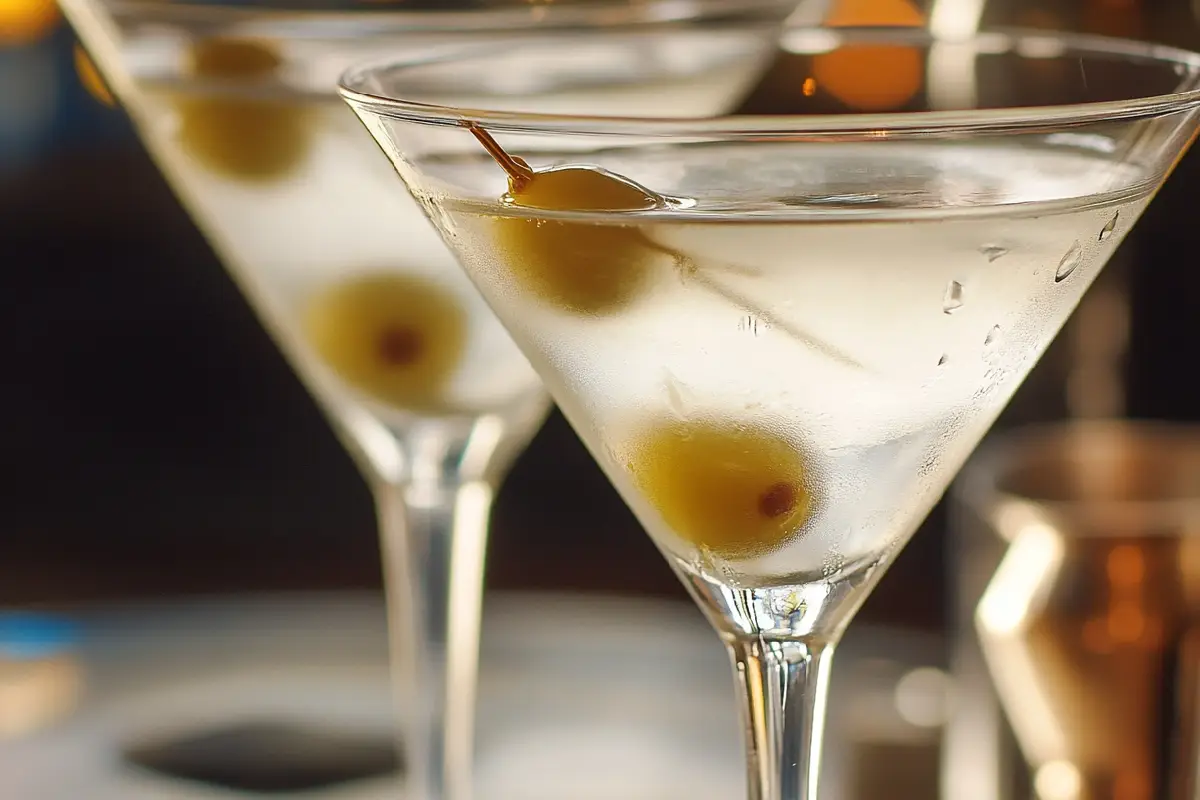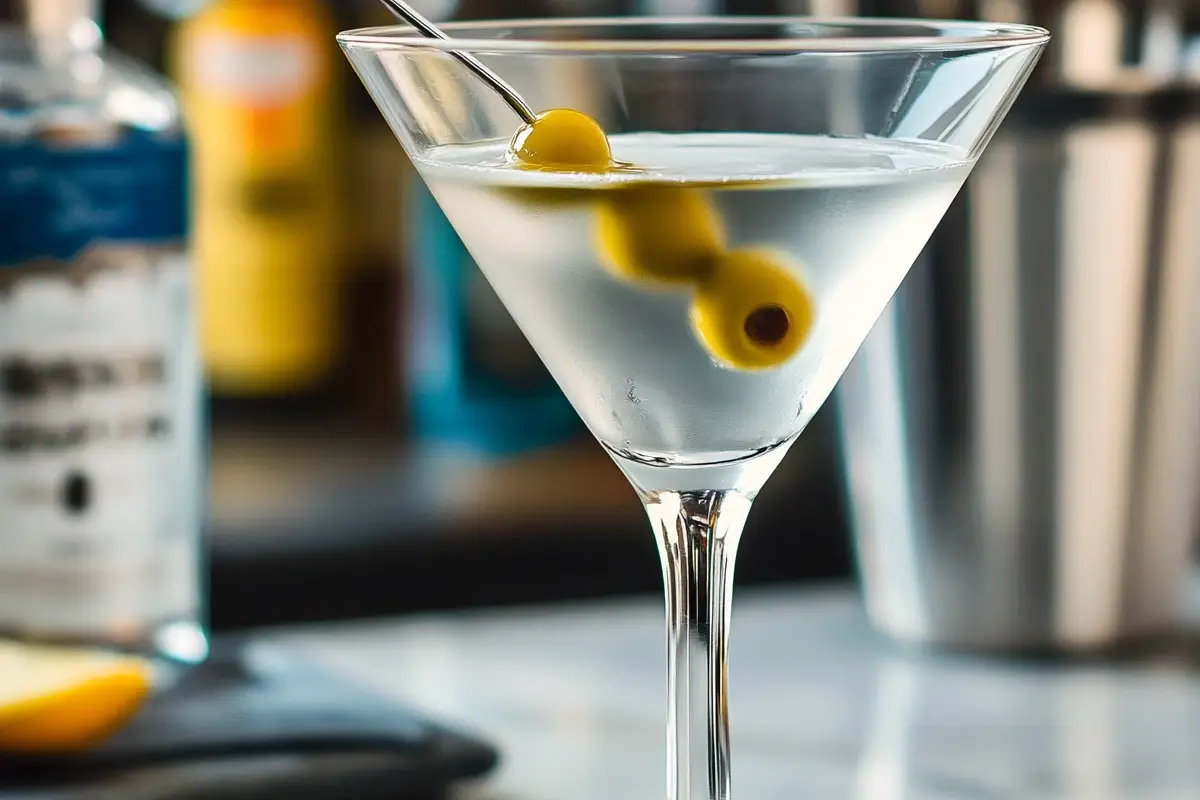The martini is one of the most iconic cocktails in the world, exuding sophistication and simplicity in a glass. The balance of two primary ingredients—gin and vermouth—determines the ultimate flavor of this timeless drink. But, with so many different preferences and interpretations, the question remains: what is the perfect gin-to-vermouth ratio in a martini? This extended article will explore the history, variations, and art of crafting the perfect martini, from the classic to the contemporary.
The Classic Martini: The Foundation of a Legendary Drink
At its core, the martini consists of two essential ingredients: gin and vermouth. The standard, or classic, martini ratio is 2:1, where two parts gin are balanced with one part vermouth. This ratio is highly regarded for offering a harmonious blend of the herbal and botanical qualities of the two ingredients. However, over the years, this classic ratio has been subject to personal preferences and experimentation, with some opting for drier or wetter martinis.
The 2:1 ratio is a great starting point for most drinkers. It provides a balance between the gin‘s botanical flavors and the herbal, slightly bitter edge of vermouth. This ratio highlights both ingredients equally, making it a favorite among martini purists. If you’re aiming for the perfect balance, this is often considered the gold standard of martini ratios.
For those looking to master their martini-making skills, check out this guide to crafting the ideal gin martini for more information on perfecting your proportions.
The Evolution of the Gin-to-Vermouth Ratio: From Wet to Dry
The evolution of the martini is an interesting journey, reflecting changing tastes over the decades. Initially, martinis were made using an equal blend of gin and vermouth—a 1:1 ratio. This style, often referred to as a “wet martini,” was more balanced between the two ingredients, allowing vermouth to play a much more prominent role. Over time, however, the martini became progressively drier, with the gin starting to dominate the cocktail.
This shift toward a “dry martini” led to ratios like 3:1 and 5:1, with the vermouth taking a more subtle, supportive role rather than sharing the spotlight. This dryness became a defining characteristic for many modern martinis, with some recipes requiring only a whisper of vermouth—in some cases, bartenders merely “rinse” the glass with vermouth before pouring in the gin.
Popular Martini Ratios Explained

- 1:1 Ratio (Wet Martini): This classic ratio provides an equal balance between gin and vermouth, allowing both ingredients to shine. This ratio fell out of favor as the trend shifted towards drier martinis.
- 2:1 Ratio (Classic Martini): A well-balanced option that allows the gin to lead, with enough vermouth to provide complexity. This ratio is a favorite among many bartenders and cocktail connoisseurs.
- 3:1 Ratio: A slightly drier option where the gin takes more of a central role, but the vermouth is still a noticeable element in the drink.
- 5:1 Ratio (Dry Martini): The go-to for most dry martini drinkers, this version minimizes the vermouth, allowing the botanical notes of gin to dominate.
- Rinsed Vermouth Martini: In this ultra-dry variation, vermouth is used only to rinse the glass, and then it is discarded, leaving just a trace of the flavor while the gin remains the focal point.
For more details on the nuances of these ratios and how to choose the best one for you, visit this detailed martini recipe guide.
How to Customize Your Martini
One of the many charms of the martini is its versatility. With a few small tweaks, you can craft a martini that perfectly suits your personal preferences. Whether you like it extra dry, dirty, or garnished with a twist of lemon, there’s a martini for every palate.
Here are a few popular ways to adjust your martini:
- Extra Dry Martini: For those who prefer a punch of gin with only a hint of vermouth, the extra dry martini is ideal. Some recipes call for just a few drops of vermouth, while others suggest rinsing the glass with vermouth before discarding it.
- Dirty Martini: This variation includes a splash of olive brine, giving the cocktail a savory, salty flavor. It’s typically garnished with green olives, adding to the drink’s briny quality.
- Wet Martini: A wet martini uses more vermouth than usual—closer to the 1:1 ratio that was popular in earlier versions of the cocktail. It results in a smoother, more balanced drink.
- Gibson Martini: This is essentially a classic martini garnished with pickled onions instead of olives or a lemon twist. The onions provide a mild sweetness that complements the dryness of the cocktail.
Customizing your martini allows you to experiment with the ingredients and garnishes to create a drink that’s uniquely your own. And for those curious about trying different garnishes, this guide includes options for both the martini and other classic cocktails like the Manhattan.
Shaken vs. Stirred: The Martini Debate
Perhaps the most famous question surrounding the martini is whether it should be shaken or stirred. Popularized by James Bond, the phrase “shaken, not stirred” has become synonymous with the martini itself. But does it really matter how you mix your drink?
- Shaken Martini: Shaking a martini with ice dilutes it more quickly and gives it a cloudier, frothier texture due to the tiny ice shards created in the process. Some prefer this method for its slightly lighter flavor and colder temperature.
- Stirred Martini: Stirring, on the other hand, results in a clearer drink with a smoother mouthfeel. The drink stays colder for longer, and there’s less dilution, allowing the gin and vermouth to retain their intensity and complexity.
The general consensus among martini purists is that stirring is the preferred method. This ensures that the ingredients blend together seamlessly while maintaining the drink’s bold flavors.
However, those who like their martinis extra cold or enjoy the slight aeration that shaking provides might prefer the shaken method. Ultimately, it’s up to personal taste, and both methods yield delicious results. For more insights on the impact of mixing methods, you can explore this detailed guide on martini techniques.
The Importance of Garnishes in a Martini
While the gin-to-vermouth ratio plays the starring role in the flavor of a martini, the garnish can add the finishing touch that elevates the drink from good to great. There are a few classic garnishes that most martini drinkers gravitate toward:
- Lemon Twist: For a clean, crisp finish, a lemon twist is the go-to garnish. It complements the botanical elements of the gin while adding a subtle citrus aroma.
- Olives: One of the most popular garnishes for a classic martini, olives provide a salty, briny element that pairs beautifully with the herbal complexity of vermouth. Some people even add a splash of olive brine for a “dirty martini.”
- Pickled Onions (Gibson): For a more unique garnish, pickled onions (used in a Gibson martini) add a tangy sweetness that balances the dryness of the drink.
Each garnish offers a different way to enhance the drink’s flavor and presentation. Whether you prefer the simplicity of a lemon twist or the savory bite of an olive, the garnish can make all the difference in your martini experience.
Choosing the Right Ingredients: Gin and Vermouth
When crafting the perfect martini, the quality of the ingredients is just as important as the ratio. With so many different styles of gin and vermouth available, it’s essential to choose the ones that best suit your taste.
Popular Gins for Martinis
- London Dry Gin: Known for its bold juniper-forward flavor, London Dry is the most commonly used gin in martinis. It provides a crisp, clean base that works well with dry vermouth.
- Old Tom Gin: This slightly sweeter style of gin adds a richer, fuller flavor to the martini. It’s a great option for those who enjoy a smoother, less sharp drink.
- Plymouth Gin: Plymouth gin is softer and more earthy than London Dry, making it a good choice for drinkers who prefer a more balanced, mellow martini.
Choosing the Right Vermouth
- Dry Vermouth: A dry martini requires dry vermouth, which has a slightly herbal and bitter flavor. It pairs well with the botanicals in gin and adds complexity to the cocktail.
- Sweet Vermouth: While more commonly used in cocktails like the Manhattan, sweet vermouth can be used in certain martini variations, such as the Sweet Martini or the Perfect Martini (a blend of both dry and sweet vermouth).
When selecting your gin and vermouth, keep in mind that each brand will have its own unique flavor profile. Experimenting with different combinations can lead to the discovery of your perfect martini.
The History of the Martini: A Cocktail with a Rich Legacy
The origins of the martini are somewhat murky, with various theories about how the cocktail came to be. Some say it evolved from a drink called the Martinez, a precursor that included gin, vermouth, and a touch of maraschino liqueur. Others attribute its creation to a bartender named Jerry Thomas in the 1860s.
Regardless of its exact origins, the martini rose to prominence in the early 20th century, becoming a symbol of sophistication and elegance. It was a favorite of celebrities, politicians, and everyday drinkers alike, immortalized by figures such as Franklin D. Roosevelt and Ernest Hemingway. Today, the martini remains one of the most popular and enduring cocktails in the world.
FAQs About Martini Ratios
What is the Classic Ratio of Gin to Vermouth in a Martini?
The classic ratio is typically 2:1, with two parts gin to one part vermouth. This creates a well-balanced drink that highlights both ingredients.
What is a Dry Martini vs. a Wet Martini?
A dry martini contains less vermouth, often with ratios like 5:1 or even higher. A wet martini, on the other hand, uses more vermouth, with ratios closer to 1:1.
What Garnishes Can I Use in a Martini?
Classic garnishes include a lemon twist, green olives, or pickled onions (in a Gibson martini).
Conclusion: Mastering What is the Ratio of Gin to Vermouth in a Martini

The beauty of the martini lies in its simplicity and versatility. Whether you prefer a 2:1 ratio for a balanced drink, or a 5:1 ratio for a dry, gin-forward experience. The key to mastering this cocktail is experimentation. By adjusting the ratio, garnish, and preparation method, you can create a martini that suits your taste perfectly.
For those looking to expand their cocktail repertoire. Be sure to explore related recipes like the Brandy Manhattan, which offers another take on a sophisticated, spirit-forward drink.

